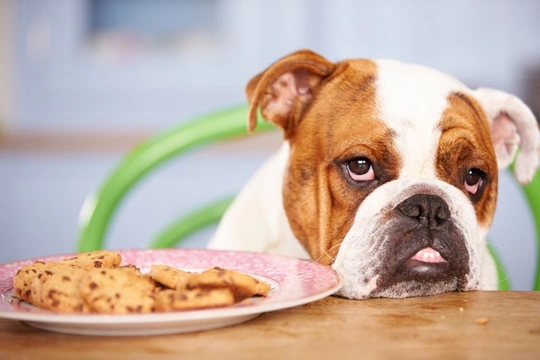
How dangerous is chocolate to dogs really?
Virtually all dog owners know that chocolate can be toxic to dogs, but a significant number of dogs need to see the vet every year for eating it nonetheless, as dogs are such adept beggars and scavengers that it can be all too easy for a dog to eat something they shouldn’t, even when their owners are very vigilant!
Chocolate can and may pose a very real threat to your dog’s health, and dogs die every year from eating it-but all dog owners also know of a friend or family member whose dog managed to eat a whole cake or box of chocolates and suffer from no ill effects.
This means that some dog owners don’t really appreciate the potential threat that chocolate can pose to their pets, nor now to work out how much of a problem ingestion of chocolate really is. The potential risk from ingesting chocolate also varies considerably depending on both the chocolate and the dog-factors that we will look at in more detail below.
In this article, we will examine how dangerous chocolate really is to dogs, why it is a danger, and how to assess the risk. Read on to learn more.
What makes chocolate toxic to dogs?
Chocolate is made from cocoa, which in turn comes from a plant called Theobroma cacao. Within the cocoa is a substance called theobromine, which is part of what makes chocolate so delicious to people, and that leads to the good feelings that we usually associate with eating it! However, even small quantities of theobromine are toxic to dogs-and other animals too, such as birds. All types of chocolate, however processed, contain theobromine to some degree-but it is the variance in levels between different types of chocolate that can mean the difference between a dog eating it and being fine, and a dog becoming seriously ill.
The type of chocolate the dog eats is the main factor in terms of how much theobromine they ingest, and so, how much of a threat it is, but other considerations need to be taken into account too.
How much chocolate is eaten is one of these, as is of course the size of the dog-a larger dog will be able to ingest more than a smaller dog without becoming seriously ill. Additionally, if the dog’s stomach is already full, the impact will be lessened, while chocolate eaten on an empty stomach will be absorbed faster and more acutely.
Taking all of these things into account, we will not look at different types of chocolate and the risk associated with them.
White chocolate
White chocolate is made from cocoa butter rather than pure cocoa, which is why it looks and tastes so different to other forms of chocolate. As the cocoa portion of chocolate is what contains the theobromine that poses a threat to dogs, this makes white chocolate the least risky to dogs, as it only contains low levels of theobromine.
However, this does not make it totally safe, or a suitable treat for your dog by any means-a small dog eating a lot of white chocolate may still become seriously ill, and it is wise to not give your dog the taste for chocolate in any form in the first place.
Milk chocolate
Milk chocolate contains whole cocoa rather than cocoa butter, mixed of course with milk and other ingredients. This goes some way to watering down the amount of theobromine in a bar, but it is still by no means safe. Milk chocolate can still pose a threat to your dog, particularly in the case of good quality chocolates, which tend to have a higher cocoa content than cheap bars from sweet shops.
However, one chocolate eaten as a one-off by an average-sized dog is unlikely to cause a problem.
Dark chocolate
Dark chocolate, also sometimes known as black chocolate or plain chocolate, contains the highest levels of cocoa and so, theobromine of all types of chocolate. Rather than a lot of milk, as is added to milk chocolate, dark chocolate uses cocoa butter, as well as a cocoa content of anything up to or even above 70%, depending on quality.
This makes dark chocolate-particularly the better quality types-the riskiest type of chocolate for dogs, and if a small dog eats a square or two, they may still become ill.
Cocoa
Cocoa itself, which is the raw material that chocolate is made from, is of course also a thread. Cocoa can be bought as powders for drinks and as a cake ingredient, or can be found in things like drinking chocolate, which consist of cocoa mixed with sugar.
Cooking chocolate too tends to be cocoa-rich-even more so than dark chocolate-and the risk posed by cocoa itself is more acute than any other form of chocolate.
This means that ingestion of cooking chocolate, cocoa powder or paste or cakes that are rich with cocoa and cocoa icing as the greatest dangers to your dog.
If you know or suspect that your dog has eaten even a spoonful of cocoa, this can lead to acute illness, so play it safe and contact your vet ASAP.



